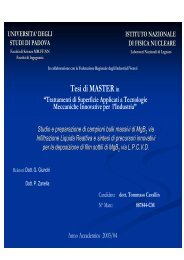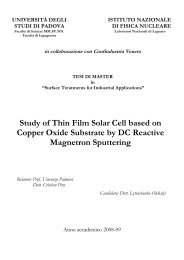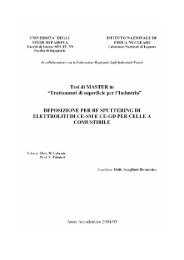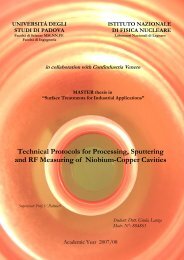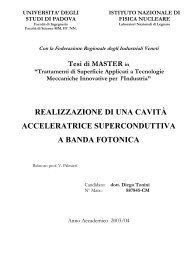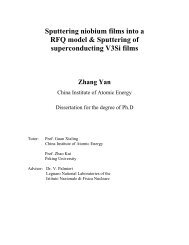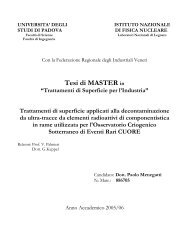Magnetron sputtering of Superconducting Multilayer Nb3Sn Thin Film
Magnetron sputtering of Superconducting Multilayer Nb3Sn Thin Film
Magnetron sputtering of Superconducting Multilayer Nb3Sn Thin Film
You also want an ePaper? Increase the reach of your titles
YUMPU automatically turns print PDFs into web optimized ePapers that Google loves.
775°C. From the same diagram, it is seen that several spurious phases are alsopossible, and this can represent a limitation for the fabrication <strong>of</strong> superconductingcavities. Besides T C , however for Nb-Sn system there is another quantityundergoing a much stronger variation in the narrow composition range between24.5 at. % and 25 at.% Sn: the resistivity in normal state just before transition.Resistivity indeed changes from 20 μΩ cm at 24.4 at. % tin to less than 4 μΩcm at25 at.% tin; this sharp change being a direct consequence <strong>of</strong> the perfectly orderedstate <strong>of</strong> Nb 3 Sn. This consideration is absolutely critical: for everybody wishing tocarry on further investigation on Nb 3 Sn, it is mandatory to look for low resistivity.The parameters comparison between Nb and Nb 3 Sn are shown in Table 1.4 [1] .Table 1.4 the parameters <strong>of</strong> Nb 3 Sn and NbFig 1.8 the crystal structure <strong>of</strong> MgB 2Another important new superconductivity material is the magnesium diboride15



